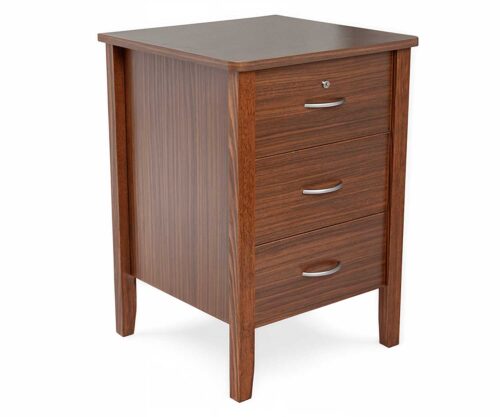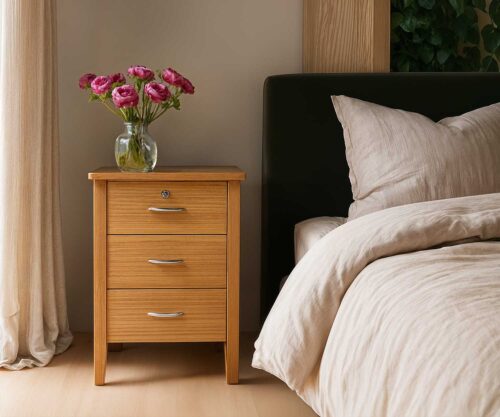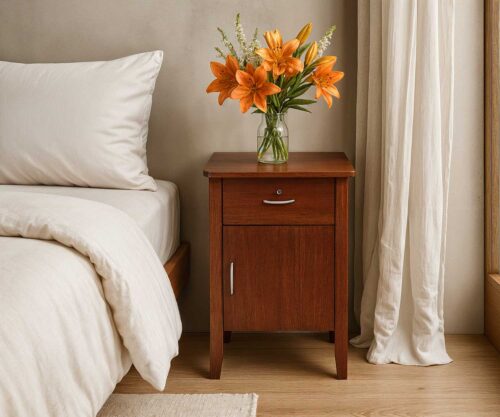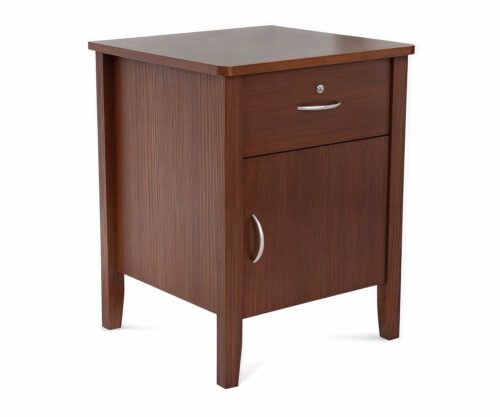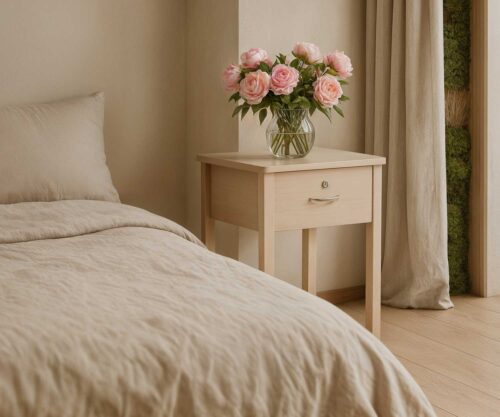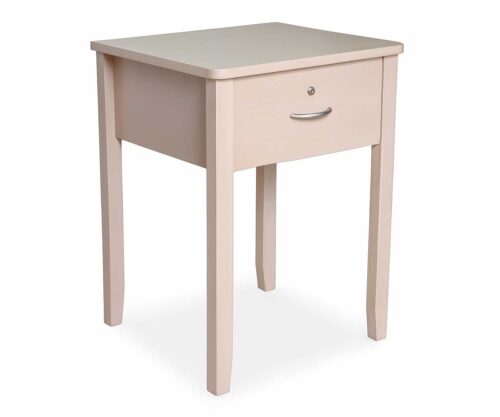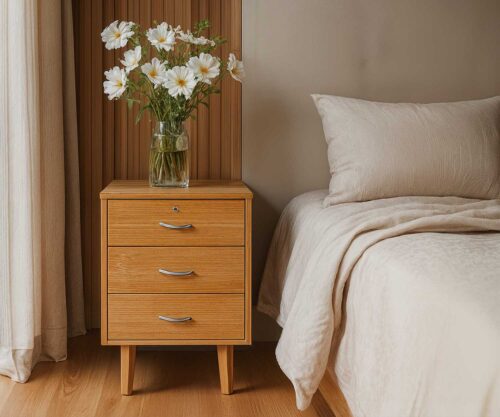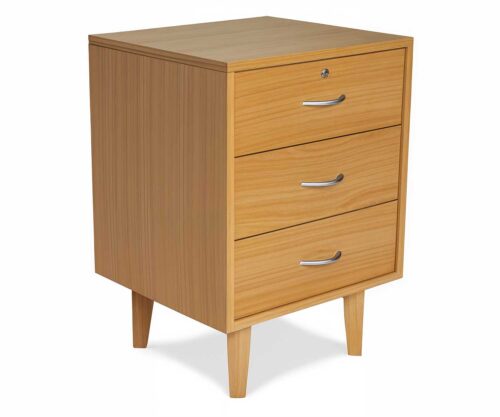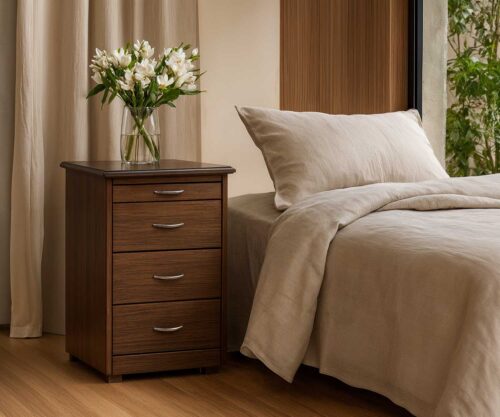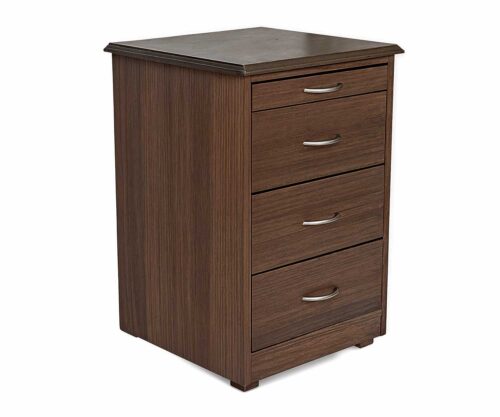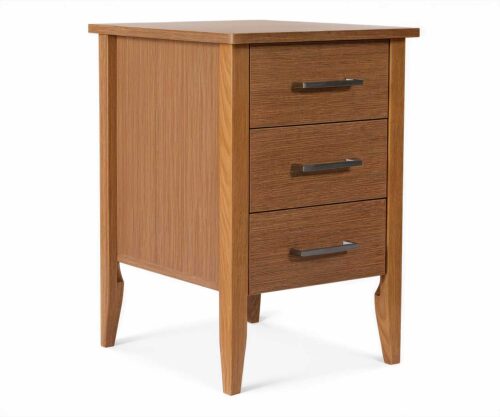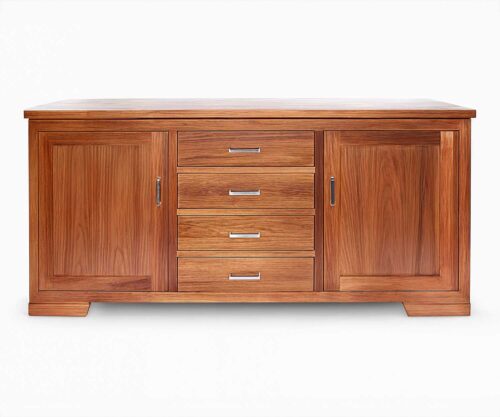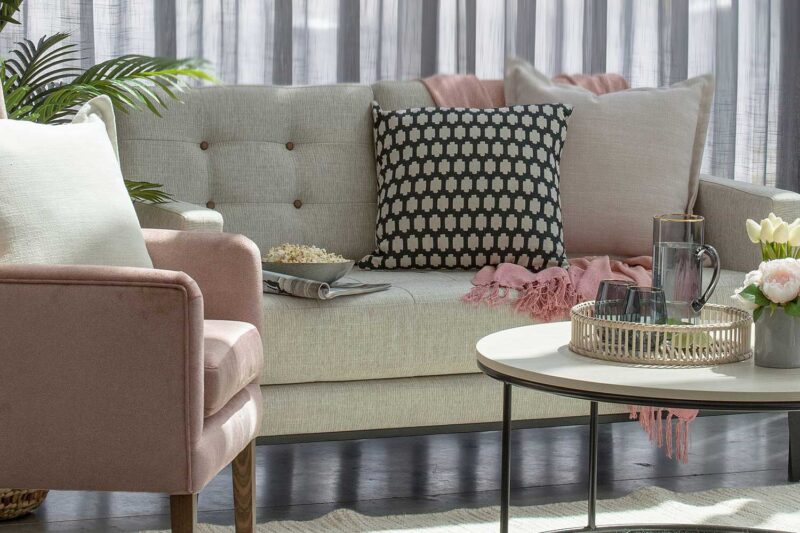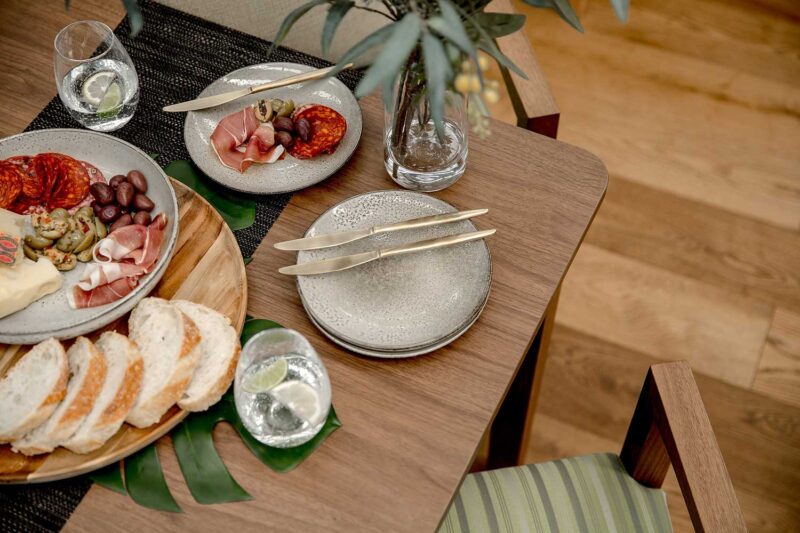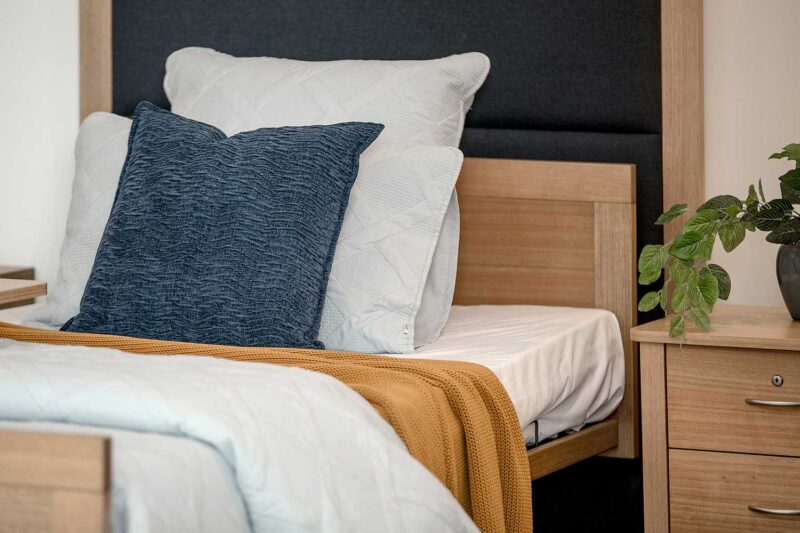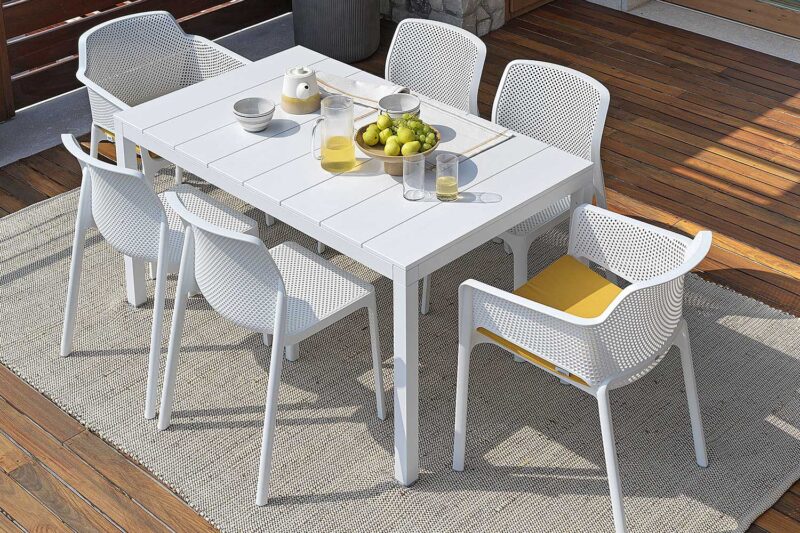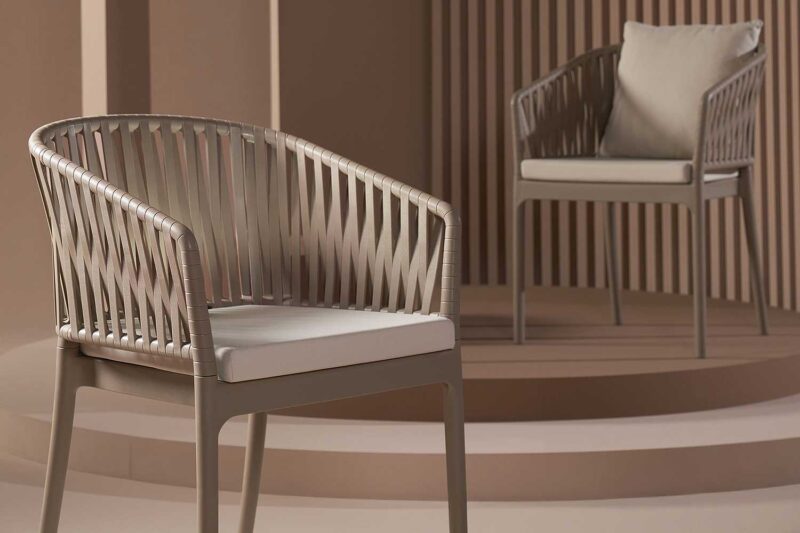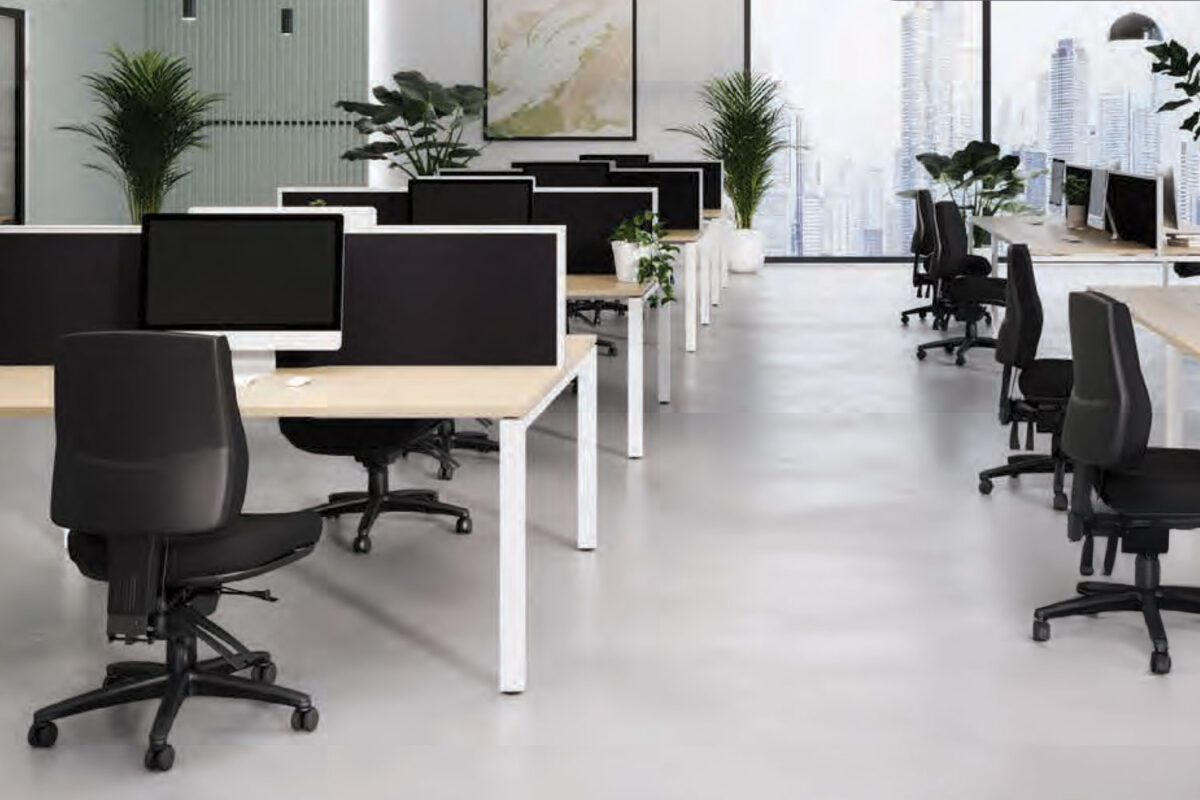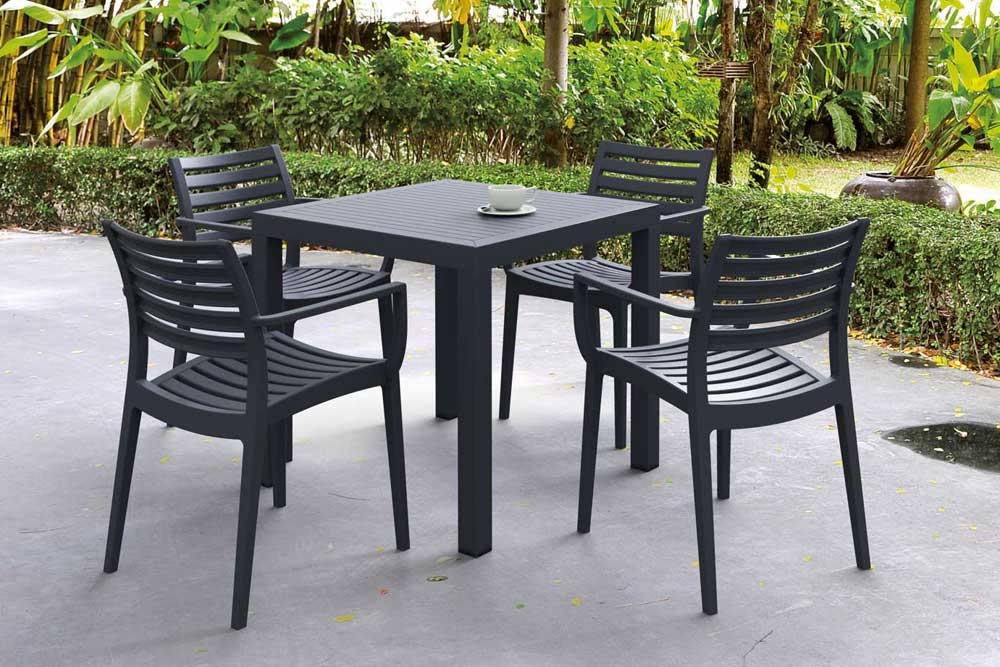Compliance with Australian Aged Care Quality Standards: A Guide to Safe, Clean and Well-Maintained Furniture
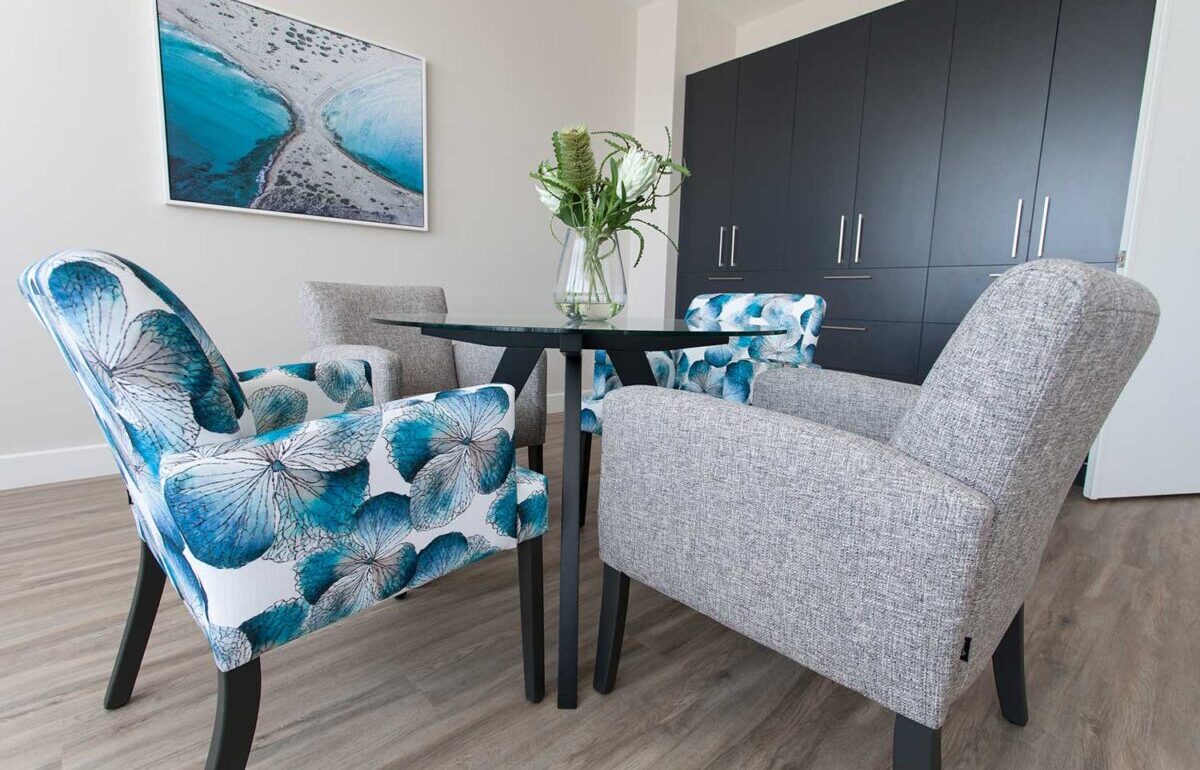
In 2024, the landscape of aged care in Australia is set to undergo significant changes with the introduction of a new Aged Care Act. This move by the Australian Government comes in response to feedback from the Royal Commission into Aged Care Quality and Safety, aiming to strengthen the existing Aged Care Quality Standards. As part of these changes, the Standards are set to be consolidated from eight to seven, streamlining and enhancing the overall framework for aged care providers.
In this article, we’ll focus on the implications for furniture within aged care facilities, exploring how providers can ensure their furniture aligns with the upcoming changes and remains safe, clean, well-maintained, and suitable for consumers.
The Importance of Quality Standards for Aged Care Furniture
Quality furniture is integral to the well-being of residents in aged care facilities. As the industry evolves, ensuring compliance with Quality Standards becomes paramount. Here’s how aged care providers can navigate the changes to deliver on the promise of safety, cleanliness, and suitability:
1. Familiarize Yourself with the New Standards
Stay informed about the impending changes to the Aged Care Quality Standards. Understand the consolidated framework, as it will impact the way providers assess and maintain the quality of care, including the furniture within their facilities.
The new Aged Care Act will usher in a fresh “person-centred” aged care framework, incorporating a comprehensive Statement of Rights. This legislation will establish novel responsibilities for providers and workers, amplifying the authority of regulatory bodies. Additionally, it will serve as the legal foundation for the reinforced Quality Standards and the introduction of the updated Regulatory Model.
2. Safety First: Ergonomic and Sturdy Furniture
Ensuring the safety of residents within aged care facilities involves a meticulous focus on selecting furniture that is not only aesthetically pleasing but, more importantly, ergonomically designed and structurally sturdy. This principle of “Safety First” underscores the critical role that furniture plays in preventing accidents, enhancing comfort, and promoting overall well-being among elderly residents.
- Ergonomic Design: Opt for furniture that provides adequate support to the human body, taking into consideration the unique needs of elderly individuals. Ergonomic designs help minimize the risk of discomfort, muscle strain, and related health issues. Consider the ease of use for residents with varying levels of mobility. Ergonomic furniture should promote accessibility, ensuring that seniors can comfortably and safely engage with the furniture without unnecessary strain.
- Sturdiness and Stability: Choose materials known for their durability and strength. Sturdy frames and robust construction are essential to withstand the rigors of daily use in an aged care setting. Materials like solid wood, reinforced steel, or high-quality polymers are often preferred for their resilience. Assess the weight-bearing capacity of furniture items, particularly for items like chairs and beds. Sturdy furniture minimizes the risk of accidents, such as collapse or breakage, ensuring the safety of residents during regular use.
- Fall Prevention: Incorporate anti-slip features into furniture design, especially for items placed in communal areas and bathrooms. This minimizes the likelihood of slips and falls, common concerns among elderly individuals, and contributes significantly to the overall safety of the living environment. Choose furniture with low-profile designs, reducing the risk of tripping hazards. This is particularly important for items positioned in hallways, bedrooms, and other high-traffic areas within the facility.
- Compliance with Safety Standards: Ensure that the selected furniture adheres to industry safety standards and regulations. Compliance with these standards not only guarantees the safety of residents but also reflects a commitment to maintaining a high standard of care within the aged care facility.
3. Cleanliness and Hygiene: Easy-to-Clean Materials
Hygiene is critical in aged care settings. Opt for furniture made from materials that are easy to clean and maintain. This not only ensures a sanitary environment but also contributes to the longevity of the furniture.
- Non-Porous Surfaces: Opt for furniture with non-porous surfaces that can be easily wiped clean. This feature prevents the absorption of liquids and reduces the risk of bacterial growth, making it simpler to maintain a high level of cleanliness. Choose materials that are resistant to staining, allowing for swift and effective removal of spills and other contaminants. This helps preserve the aesthetic appeal of the furniture while minimizing the risk of hygiene-related issues.
- Antimicrobial Properties: Consider furniture with antimicrobial finishes or treatments. These features actively inhibit the growth of bacteria and other microorganisms on the furniture surface, contributing to a more hygienic environment and reducing the risk of cross-contamination.
- Durability and Longevity: Select materials that withstand regular cleaning without compromising their integrity. Durable materials resist wear and tear, ensuring that the furniture remains in good condition over an extended period, reducing the need for frequent replacements. Opt for furniture designs that facilitate easy access to all surfaces, corners, and crevices. This not only streamlines the cleaning process but also ensures that every part of the furniture is effectively sanitized.
- Compliance with Infection Control Guidelines: Ensure that the chosen furniture complies with infection control guidelines and standards set by health authorities. Meeting these regulations is essential for providing a safe and hygienic environment for residents and staff alike.
- Allergen-Free Materials: Consider furniture made from hypoallergenic materials to minimize the risk of triggering allergies or sensitivities among residents. Allergen-free materials contribute to a healthier and more comfortable living space for individuals with diverse health needs.
- Maintenance Protocols: Implement and communicate clear cleaning protocols for staff members. Regular and systematic cleaning routines, including the use of appropriate cleaning agents, contribute to maintaining a consistently hygienic environment.
- Resident Comfort: If using upholstered furniture, choose fabrics that are not only comfortable but also easy to clean. Stain-resistant and moisture-repellent fabrics contribute to both comfort and hygiene.
4. Regular Maintenance Checks
Well-maintained furniture contributes to the overall safety and comfort of residents. Implement a routine maintenance schedule, addressing issues promptly to avoid wear and tear that could compromise the quality and safety of the furniture.
- Scheduled Inspections: Establish a regular schedule for comprehensive furniture inspections. This can include weekly, monthly, and quarterly checks to assess different aspects of the furniture, ensuring that potential issues are identified and addressed promptly.
- Structural Integrity: Evaluate the structural integrity of each furniture piece. Inspect joints, frames, and any moving parts for signs of wear, damage, or instability. Addressing structural issues early on helps prevent accidents and ensures the ongoing safety of residents.
- Wear and Tear: Examine the furniture for visible signs of wear and tear. This includes checking for scratches, dents, or any deterioration in the finish. Early detection allows for timely repairs or refurbishments, contributing to the overall aesthetic appeal of the facility.
- Functionality Checks: Test the functionality of adjustable features, if applicable. This is particularly important for items like beds and chairs with movable parts. Ensuring that these features work correctly enhances the comfort and convenience for residents.
- Upholstery and Fabrics: Inspect upholstered furniture for any tears, stains, or damage to fabrics. Addressing these issues promptly not only preserves the visual appeal but also contributes to a clean and hygienic living environment.
- Safety Features: Verify the functionality of safety features, such as anti-slip elements and stability mechanisms. Confirm that these features are in optimal condition to prevent accidents and enhance the overall safety of the furniture.
- Documentation and Reporting: Maintain a systematic record of maintenance checks, detailing observations and actions taken. This documentation serves as a valuable reference for tracking the history of each furniture item and aids in future decision-making regarding repairs or replacements.
- Professional Assessments: Periodically engage professionals for more in-depth assessments. While regular staff checks are essential, professionals can provide a more comprehensive evaluation, identifying potential issues that might not be immediately apparent.
- Training for Staff: Provide training for staff members responsible for conducting maintenance checks. Equip them with the knowledge and skills needed to identify and address common issues, fostering a proactive culture of furniture care within the facility.
5. Customization for Consumer Suitability
Recognize the diverse needs of aged care residents. Choose furniture that can be customized to accommodate various preferences and requirements, such as adjustable features for personalized comfort.
- Personalized Comfort: Opt for furniture with adjustable elements, such as reclining chairs or beds with customizable height settings. These features empower residents to personalize their furniture for optimal comfort, taking into account individual preferences and physical requirements.
- Accessibility and Mobility: Consider the accessibility and ease of use of furniture items. Customization can involve designing furniture that accommodates mobility aids, ensuring that residents with varying levels of mobility can navigate their living spaces comfortably and independently.
- Fabric and Material Choices: Offer a variety of fabric and material choices for upholstered furniture. Residents may have specific preferences or sensitivities to certain materials, and providing options allows them to choose furniture that aligns with their comfort and sensory preferences.
- Size and Configuration: Recognize that residents come in different shapes and sizes. Offering furniture in various sizes allows for a tailored fit, promoting both comfort and safety. Additionally, consider modular furniture options that can be configured to suit different room layouts.
- Colour and Aesthetics: Acknowledge the role of aesthetics in creating a comfortable living environment. Provide a range of colour and design options, allowing residents to personalize their spaces and contribute to a homely atmosphere within the aged care facility.
- Cognitive Considerations: Consider furniture designs that are cognitively supportive. This could involve avoiding complex patterns or using contrasting colors to aid individuals with cognitive challenges in distinguishing different elements of the furniture.
- Consultation with Residents: Actively involve residents in the decision-making process when selecting or customizing furniture. Gather feedback on their preferences and needs, fostering a sense of agency and ensuring that the furniture aligns with their expectations.
- Evolving Needs: Recognize that residents’ needs may evolve over time. Choose furniture that can be adapted or modified to accommodate changing requirements, ensuring a sustainable and flexible approach to meeting the diverse needs of individuals.
- Support for Specialized Care: Tailor furniture to support residents with specific care needs, such as those requiring additional postural support or specialized therapeutic features. This ensures that the furniture contributes positively to the overall health and well-being of residents.
- Communication and Education: Communicate the available customization options effectively to residents and their families. Providing educational materials or consultations can empower residents to make informed choices that align with their unique preferences and requirements.
6. Stay Environmentally Conscious
Staying environmentally conscious in aged care furniture involves prioritizing sustainable practices:
- Opt for eco-friendly materials, recyclable components, and low VOC emissions.
- Choose durable designs to minimize replacements and reduce waste.
- Prioritize local sourcing, reduce packaging, and promote environmental certifications.
- Educate staff and residents on responsible use and disposal.
- Embrace continuous improvement and innovations in sustainable manufacturing.
By making environmentally conscious choices, aged care facilities can contribute to a healthier planet while creating a sustainable and comfortable living environment for residents.
7. Stay Informed and Adapt
As the new Aged Care Act comes into effect, remain vigilant about further updates and changes in the regulatory landscape. Being adaptable to new requirements ensures that your facility is consistently providing high-quality care and adhering to the evolving standards.
The changes to the Australian Aged Care Quality Standards highlight the ongoing commitment to improving the quality of care provided to elderly Australians. By focusing on safe, clean, well-maintained, and suitable furniture, aged care providers can contribute to a positive and supportive environment for residents. Keep an eye on the evolving standards, stay informed, and continue to prioritize the well-being of those under your care.
Australian Made Aged Care Chairs
An essential element in creating comfortable and supportive environments for elderly residents.
More News
Compliance with Australian Aged Care Quality Standards: A Guide to Safe, Clean and Well-Maintained Furniture

In 2024, the landscape of aged care in Australia is set to undergo significant changes with the introduction of a new Aged Care Act. This move by the Australian Government comes in response to feedback from the Royal Commission into Aged Care Quality and Safety, aiming to strengthen the existing Aged Care Quality Standards. As part of these changes, the Standards are set to be consolidated from eight to seven, streamlining and enhancing the overall framework for aged care providers.
In this article, we’ll focus on the implications for furniture within aged care facilities, exploring how providers can ensure their furniture aligns with the upcoming changes and remains safe, clean, well-maintained, and suitable for consumers.
The Importance of Quality Standards for Aged Care Furniture
Quality furniture is integral to the well-being of residents in aged care facilities. As the industry evolves, ensuring compliance with Quality Standards becomes paramount. Here’s how aged care providers can navigate the changes to deliver on the promise of safety, cleanliness, and suitability:
1. Familiarize Yourself with the New Standards
Stay informed about the impending changes to the Aged Care Quality Standards. Understand the consolidated framework, as it will impact the way providers assess and maintain the quality of care, including the furniture within their facilities.
The new Aged Care Act will usher in a fresh “person-centred” aged care framework, incorporating a comprehensive Statement of Rights. This legislation will establish novel responsibilities for providers and workers, amplifying the authority of regulatory bodies. Additionally, it will serve as the legal foundation for the reinforced Quality Standards and the introduction of the updated Regulatory Model.
2. Safety First: Ergonomic and Sturdy Furniture
Ensuring the safety of residents within aged care facilities involves a meticulous focus on selecting furniture that is not only aesthetically pleasing but, more importantly, ergonomically designed and structurally sturdy. This principle of “Safety First” underscores the critical role that furniture plays in preventing accidents, enhancing comfort, and promoting overall well-being among elderly residents.
- Ergonomic Design: Opt for furniture that provides adequate support to the human body, taking into consideration the unique needs of elderly individuals. Ergonomic designs help minimize the risk of discomfort, muscle strain, and related health issues. Consider the ease of use for residents with varying levels of mobility. Ergonomic furniture should promote accessibility, ensuring that seniors can comfortably and safely engage with the furniture without unnecessary strain.
- Sturdiness and Stability: Choose materials known for their durability and strength. Sturdy frames and robust construction are essential to withstand the rigors of daily use in an aged care setting. Materials like solid wood, reinforced steel, or high-quality polymers are often preferred for their resilience. Assess the weight-bearing capacity of furniture items, particularly for items like chairs and beds. Sturdy furniture minimizes the risk of accidents, such as collapse or breakage, ensuring the safety of residents during regular use.
- Fall Prevention: Incorporate anti-slip features into furniture design, especially for items placed in communal areas and bathrooms. This minimizes the likelihood of slips and falls, common concerns among elderly individuals, and contributes significantly to the overall safety of the living environment. Choose furniture with low-profile designs, reducing the risk of tripping hazards. This is particularly important for items positioned in hallways, bedrooms, and other high-traffic areas within the facility.
- Compliance with Safety Standards: Ensure that the selected furniture adheres to industry safety standards and regulations. Compliance with these standards not only guarantees the safety of residents but also reflects a commitment to maintaining a high standard of care within the aged care facility.
3. Cleanliness and Hygiene: Easy-to-Clean Materials
Hygiene is critical in aged care settings. Opt for furniture made from materials that are easy to clean and maintain. This not only ensures a sanitary environment but also contributes to the longevity of the furniture.
- Non-Porous Surfaces: Opt for furniture with non-porous surfaces that can be easily wiped clean. This feature prevents the absorption of liquids and reduces the risk of bacterial growth, making it simpler to maintain a high level of cleanliness. Choose materials that are resistant to staining, allowing for swift and effective removal of spills and other contaminants. This helps preserve the aesthetic appeal of the furniture while minimizing the risk of hygiene-related issues.
- Antimicrobial Properties: Consider furniture with antimicrobial finishes or treatments. These features actively inhibit the growth of bacteria and other microorganisms on the furniture surface, contributing to a more hygienic environment and reducing the risk of cross-contamination.
- Durability and Longevity: Select materials that withstand regular cleaning without compromising their integrity. Durable materials resist wear and tear, ensuring that the furniture remains in good condition over an extended period, reducing the need for frequent replacements. Opt for furniture designs that facilitate easy access to all surfaces, corners, and crevices. This not only streamlines the cleaning process but also ensures that every part of the furniture is effectively sanitized.
- Compliance with Infection Control Guidelines: Ensure that the chosen furniture complies with infection control guidelines and standards set by health authorities. Meeting these regulations is essential for providing a safe and hygienic environment for residents and staff alike.
- Allergen-Free Materials: Consider furniture made from hypoallergenic materials to minimize the risk of triggering allergies or sensitivities among residents. Allergen-free materials contribute to a healthier and more comfortable living space for individuals with diverse health needs.
- Maintenance Protocols: Implement and communicate clear cleaning protocols for staff members. Regular and systematic cleaning routines, including the use of appropriate cleaning agents, contribute to maintaining a consistently hygienic environment.
- Resident Comfort: If using upholstered furniture, choose fabrics that are not only comfortable but also easy to clean. Stain-resistant and moisture-repellent fabrics contribute to both comfort and hygiene.
4. Regular Maintenance Checks
Well-maintained furniture contributes to the overall safety and comfort of residents. Implement a routine maintenance schedule, addressing issues promptly to avoid wear and tear that could compromise the quality and safety of the furniture.
- Scheduled Inspections: Establish a regular schedule for comprehensive furniture inspections. This can include weekly, monthly, and quarterly checks to assess different aspects of the furniture, ensuring that potential issues are identified and addressed promptly.
- Structural Integrity: Evaluate the structural integrity of each furniture piece. Inspect joints, frames, and any moving parts for signs of wear, damage, or instability. Addressing structural issues early on helps prevent accidents and ensures the ongoing safety of residents.
- Wear and Tear: Examine the furniture for visible signs of wear and tear. This includes checking for scratches, dents, or any deterioration in the finish. Early detection allows for timely repairs or refurbishments, contributing to the overall aesthetic appeal of the facility.
- Functionality Checks: Test the functionality of adjustable features, if applicable. This is particularly important for items like beds and chairs with movable parts. Ensuring that these features work correctly enhances the comfort and convenience for residents.
- Upholstery and Fabrics: Inspect upholstered furniture for any tears, stains, or damage to fabrics. Addressing these issues promptly not only preserves the visual appeal but also contributes to a clean and hygienic living environment.
- Safety Features: Verify the functionality of safety features, such as anti-slip elements and stability mechanisms. Confirm that these features are in optimal condition to prevent accidents and enhance the overall safety of the furniture.
- Documentation and Reporting: Maintain a systematic record of maintenance checks, detailing observations and actions taken. This documentation serves as a valuable reference for tracking the history of each furniture item and aids in future decision-making regarding repairs or replacements.
- Professional Assessments: Periodically engage professionals for more in-depth assessments. While regular staff checks are essential, professionals can provide a more comprehensive evaluation, identifying potential issues that might not be immediately apparent.
- Training for Staff: Provide training for staff members responsible for conducting maintenance checks. Equip them with the knowledge and skills needed to identify and address common issues, fostering a proactive culture of furniture care within the facility.
5. Customization for Consumer Suitability
Recognize the diverse needs of aged care residents. Choose furniture that can be customized to accommodate various preferences and requirements, such as adjustable features for personalized comfort.
- Personalized Comfort: Opt for furniture with adjustable elements, such as reclining chairs or beds with customizable height settings. These features empower residents to personalize their furniture for optimal comfort, taking into account individual preferences and physical requirements.
- Accessibility and Mobility: Consider the accessibility and ease of use of furniture items. Customization can involve designing furniture that accommodates mobility aids, ensuring that residents with varying levels of mobility can navigate their living spaces comfortably and independently.
- Fabric and Material Choices: Offer a variety of fabric and material choices for upholstered furniture. Residents may have specific preferences or sensitivities to certain materials, and providing options allows them to choose furniture that aligns with their comfort and sensory preferences.
- Size and Configuration: Recognize that residents come in different shapes and sizes. Offering furniture in various sizes allows for a tailored fit, promoting both comfort and safety. Additionally, consider modular furniture options that can be configured to suit different room layouts.
- Colour and Aesthetics: Acknowledge the role of aesthetics in creating a comfortable living environment. Provide a range of colour and design options, allowing residents to personalize their spaces and contribute to a homely atmosphere within the aged care facility.
- Cognitive Considerations: Consider furniture designs that are cognitively supportive. This could involve avoiding complex patterns or using contrasting colors to aid individuals with cognitive challenges in distinguishing different elements of the furniture.
- Consultation with Residents: Actively involve residents in the decision-making process when selecting or customizing furniture. Gather feedback on their preferences and needs, fostering a sense of agency and ensuring that the furniture aligns with their expectations.
- Evolving Needs: Recognize that residents’ needs may evolve over time. Choose furniture that can be adapted or modified to accommodate changing requirements, ensuring a sustainable and flexible approach to meeting the diverse needs of individuals.
- Support for Specialized Care: Tailor furniture to support residents with specific care needs, such as those requiring additional postural support or specialized therapeutic features. This ensures that the furniture contributes positively to the overall health and well-being of residents.
- Communication and Education: Communicate the available customization options effectively to residents and their families. Providing educational materials or consultations can empower residents to make informed choices that align with their unique preferences and requirements.
6. Stay Environmentally Conscious
Staying environmentally conscious in aged care furniture involves prioritizing sustainable practices:
- Opt for eco-friendly materials, recyclable components, and low VOC emissions.
- Choose durable designs to minimize replacements and reduce waste.
- Prioritize local sourcing, reduce packaging, and promote environmental certifications.
- Educate staff and residents on responsible use and disposal.
- Embrace continuous improvement and innovations in sustainable manufacturing.
By making environmentally conscious choices, aged care facilities can contribute to a healthier planet while creating a sustainable and comfortable living environment for residents.
7. Stay Informed and Adapt
As the new Aged Care Act comes into effect, remain vigilant about further updates and changes in the regulatory landscape. Being adaptable to new requirements ensures that your facility is consistently providing high-quality care and adhering to the evolving standards.
The changes to the Australian Aged Care Quality Standards highlight the ongoing commitment to improving the quality of care provided to elderly Australians. By focusing on safe, clean, well-maintained, and suitable furniture, aged care providers can contribute to a positive and supportive environment for residents. Keep an eye on the evolving standards, stay informed, and continue to prioritize the well-being of those under your care.
Australian Made Aged Care Chairs
An essential element in creating comfortable and supportive environments for elderly residents.
Discover the FHG Look Book: Your Source of Inspiration for Quality Australian-Made Commercial Furniture
- Quality Craftsmanship: See why we’ve been a trusted partner for over 25 years.
- Local Excellence: Learn how our Brisbane team ensures the highest standards.
- Inspiration and Ideas: Find innovative furniture solutions for any environment.
Don’t miss the opportunity to transform your commercial space with FHG’s expertly crafted furniture. Download the FHG Look Book today and start your journey towards exceptional design and quality.


